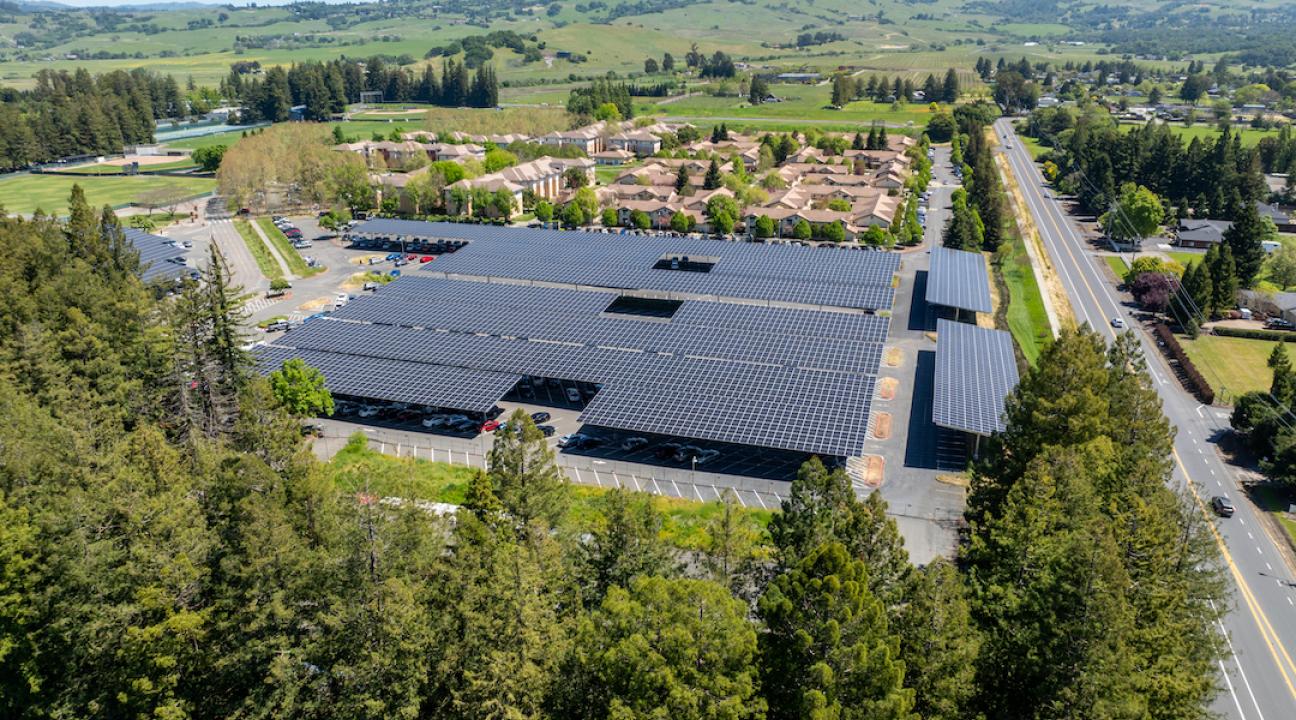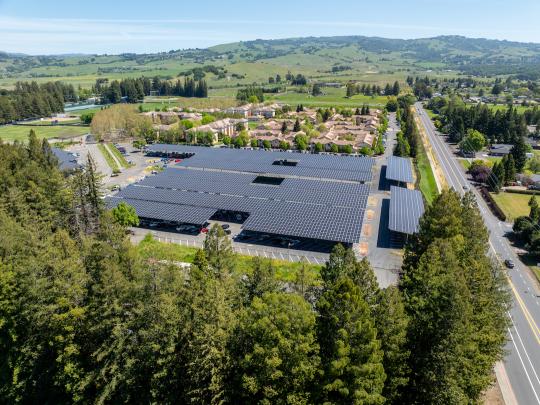Sonoma State Micro-Grid ensures energy that is renewable and responsive
Projected to save Sonoma State $6 million over 30 years, SSU's 4.5-megawatt solar array and 1.5-megawatt battery bank installation is expected to supply one-third of the campus with clean, renewable electricity throughout the year when it becomes active in spring 2025.
"We will be able to provide crucial services while meeting the needs of our residential population through sustainable energy," said Kendall Newman, SSU Emergency Services and Business Continuity Manager.
Added to the university’s Sustainability Initiative is a Micro-Grid, which will be activated for emergency response during public safety power shutoffs (PSPS). The Micro-Grid acts as a control panel directing solar/battery power to produce enough energy to run three areas on campus: the Emergency Operations Center (EOC), the Student Center Main Kitchen, and the Rec Center to support shelter-in-place needs.
A team formed among Facilities Management, Campus Planning, Design, and Construction (CPDC), and Risk Management and Safety Services is spearheading these projects with the CSU Chancellor's support.
Emergency Resiliency
Given Sonoma County’s recent history of flooding and wildfires, having a Micro-Grid that powers emergency needs for the university is a fail-safe for campus residents and surrounding communities.
"With human-made and natural disasters on the rise, it's reassuring for us to have increased options for emergency response," said Tyson Hill, Associate Vice President for Risk Management and Safety Services.
Associate Vice President of Facilities Dana Twedell added that PSPS events like the one in 2019, which affected about 2.6 million people throughout the state, could pose another kind of emergency.
"We're almost a mini-city unto ourselves, and our students are the majority of our population, so we have to provide a safe environment where we know we can take care of them," he said.
"We have a large residential population at SSU. Some of our housing students have nowhere to evacuate in an emergency. We are their home," Newman said.
Future Renewable Energy and Responsiveness
As PG&E rates rose by almost 13 percent last year, Twedell said preparing for a sustainable future is a wise course of action.
"I am proud that Sonoma State University and the entire CSU system is pushing forward with renewables. We are committed to reducing our greenhouse gases, and we are committed to being more sustainable," he said
As one of the first full-scale Micro-Grids in Sonoma County, Hill said the broader community can look to SSU as a model.
“I think it's good for us all to consider how we can apply the concept of renewable energy to our own personal lives, professional lives, or the institutions we support," he said.
"We continue to think about the environmental and climate change impacts that could affect the campus and region,” Newman said.
“Even though there will always be things we can’t predict, the Micro-Grid is key to ensuring that we can meet the needs of Sonoma State and our county.”
Krista Sherer, Strategic Communications Writer



